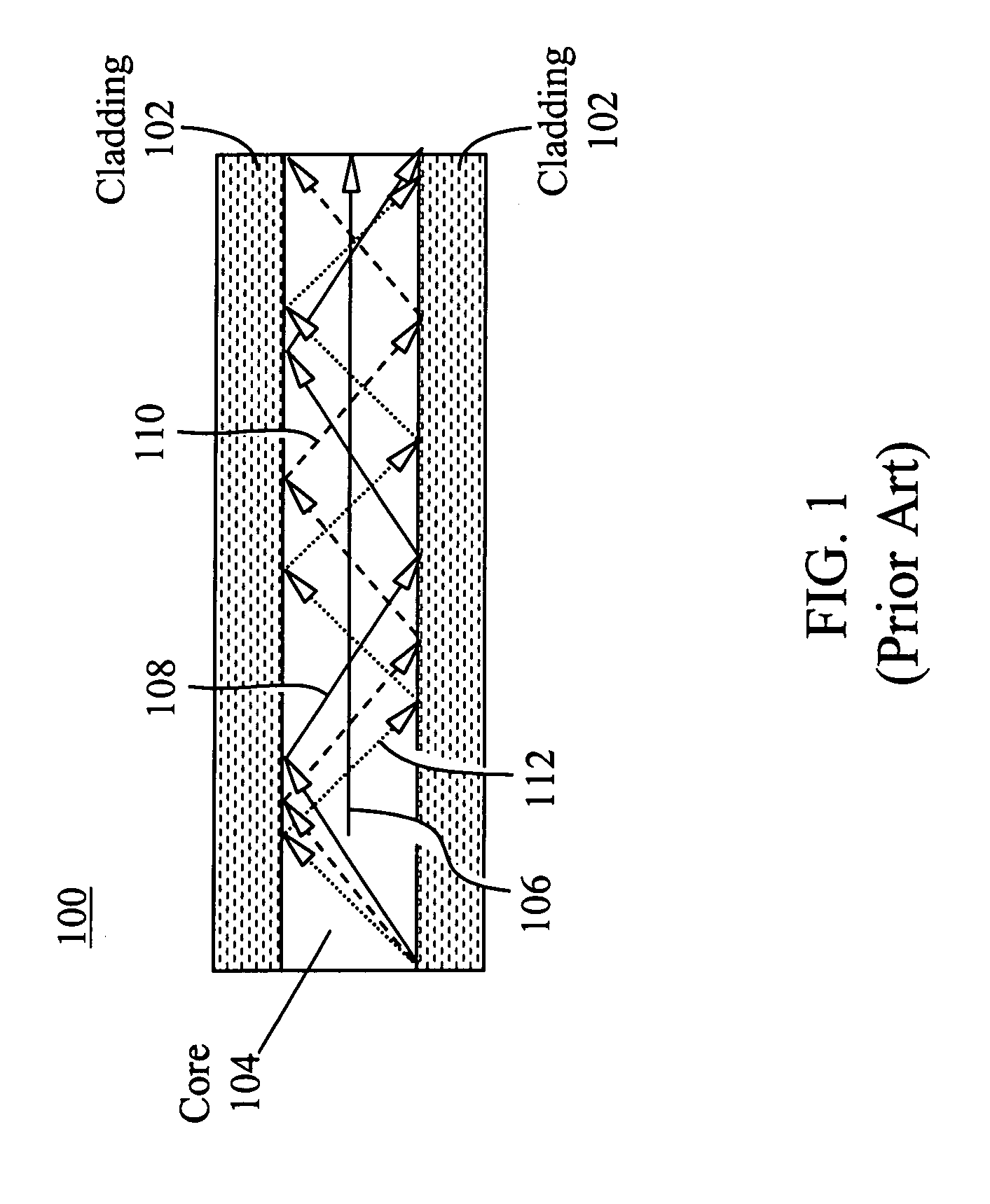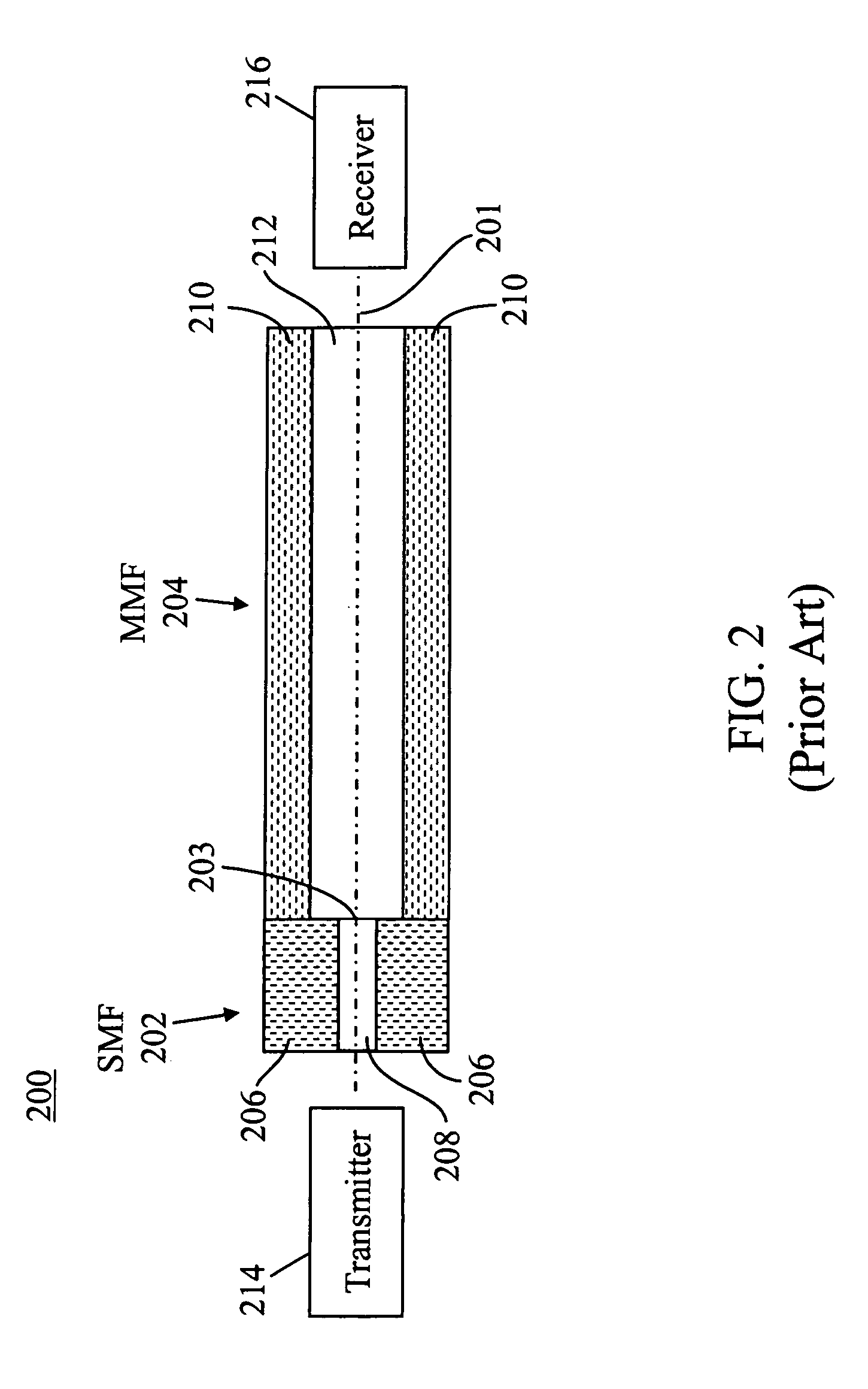Apparatus, system and method for an adiabatic coupler for multi-mode fiber-optic transmission systems
a multi-mode fiber-optic transmission system and adiabatic coupler technology, applied in the field of fiber-optic communication systems, can solve the problems of low bandwidth of mmf, limited bandwidth of existing, and support transmission at relatively low speeds, so as to improve system bandwidth, reduce overall device cost, and reduce insertion loss
- Summary
- Abstract
- Description
- Claims
- Application Information
AI Technical Summary
Benefits of technology
Problems solved by technology
Method used
Image
Examples
Embodiment Construction
[0034]The present invention provides an improved apparatus and method for an adiabatic taper coupler for use within optical communications systems that utilize multi-mode optical fiber. The following description is presented to enable one ordinary skill in the art to make and use the invention and is provided in the context of a patent application and its requirements. Various modifications to the preferred embodiments will be readily apparent to those skilled in the art and the generic principles described herein may be applied to other embodiments. Thus, the present invention is not intended to be limited to the embodiments shown but is to be accorded the widest scope consistent with the principles and features described herein. In order to gain a detailed understanding of the invention, the reader is referred to the appended FIGS. 4–9 in conjunction with the following description. It is to be understood that the drawings are diagrammatic and schematic representations only and are...
PUM
 Login to View More
Login to View More Abstract
Description
Claims
Application Information
 Login to View More
Login to View More - R&D
- Intellectual Property
- Life Sciences
- Materials
- Tech Scout
- Unparalleled Data Quality
- Higher Quality Content
- 60% Fewer Hallucinations
Browse by: Latest US Patents, China's latest patents, Technical Efficacy Thesaurus, Application Domain, Technology Topic, Popular Technical Reports.
© 2025 PatSnap. All rights reserved.Legal|Privacy policy|Modern Slavery Act Transparency Statement|Sitemap|About US| Contact US: help@patsnap.com



